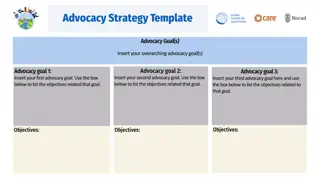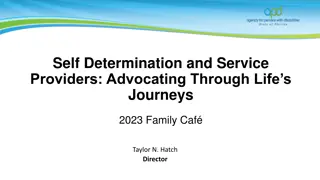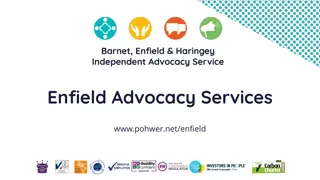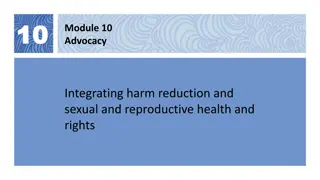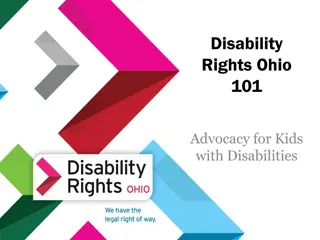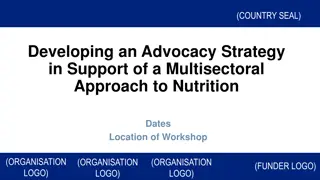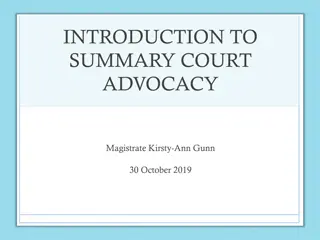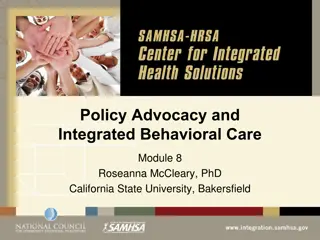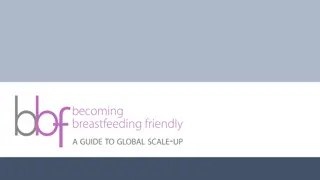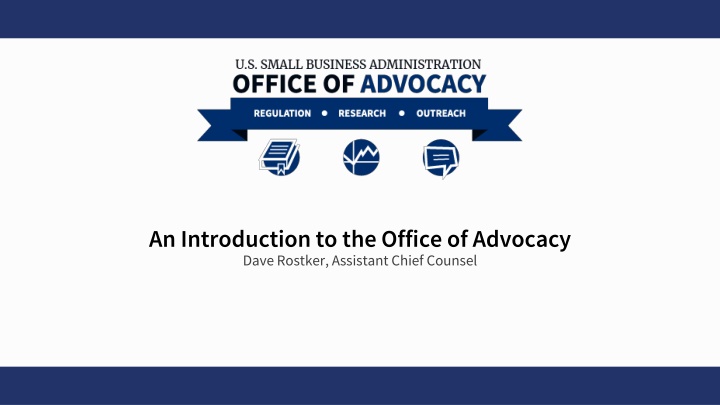
An Introduction to the Office of Advocacy: Small Business Support
Explore the Office of Advocacy, established in 1976 as a champion for small businesses in the U.S. government. Learn about its key roles, the Chief Counsel, advocacy departments, missions, and its significant impact on small business development and regulatory affairs.
Download Presentation

Please find below an Image/Link to download the presentation.
The content on the website is provided AS IS for your information and personal use only. It may not be sold, licensed, or shared on other websites without obtaining consent from the author. If you encounter any issues during the download, it is possible that the publisher has removed the file from their server.
You are allowed to download the files provided on this website for personal or commercial use, subject to the condition that they are used lawfully. All files are the property of their respective owners.
The content on the website is provided AS IS for your information and personal use only. It may not be sold, licensed, or shared on other websites without obtaining consent from the author.
E N D
Presentation Transcript
An Introduction to the Office of Advocacy Dave Rostker, Assistant Chief Counsel
Created by Congress in 1976 Independent voice for small business in the federal government Watchdog of the Regulatory Flexibility Act (RFA) Source of small business statistics WHO IS THE OFFICE OF ADVOCACY?
THE CHIEF COUNSEL The Chief Counsel for Advocacy, a presidential appointee who is confirmed by the Senate, is the head of the Office of Advocacy.
Interagency Affairs ADVOCACY DEPARTMENTS Economic Research Regional Advocates
ADVOCACYS MISSION Regulatory Mission Legislative Mission Research Mission
Employ 46.8% of the private workforce Pay 39.7% of U.S. private payroll 99.7% of firms with paid employees Created 62% of net new jobs since 1995 SMALL BUSINESS: OUR NATION S JOB CREATORS
Changes in operating costs and demands Complex and costly federal regulations Fewer resources to get involved in federal rulemaking process SMALL BUSINESS CHALLENGES
HOW ADVOCACY REPRESENTS SMALL BUSINESS Small Business Office of Advocacy White House Federal Agencies Congress Judicial
ADVOCACYS ROLE IN RULEMAKING HELP AGENCIES DEVELOP LESS BURDENSOME RULES COMMUNICATE WITH AGENCIES DRAFTING REGULATIONS TRAIN AGENCY OFFICIALS ON RFA COMPLIANCE ENSURE AGENCIES COMPLY WITH RFA PUBLIC COMMENT LETTERS TO AGENCIES REGULATORY ALERTS TO SMALL BUSINESS STAKEHOLDERS SMALL BUSINESS OUTREACH
WHAT DOES THE OFFICE OF ECONOMIC RESEARCH DO? Economic Studies Issue Briefs Fact Sheets Infographics
SMALL BUSINESS DATA Economic Activity Industry Geographic Area Firm Size Characteristics of Businesses and Business Owners
RESEARCH TO AID SMALL BUSINESS Small business profiles for each state and Congressional district Research on: Business turnover Employment Finance Minority-, women-, and veteran- owned businesses. Advocacy accepts research ideas from Congress, businesses, and the public
NATIONWIDE OUTREACH 10 Regional Advocates Small business meetings around the nation Small business input on effects of federal regulations Provide feedback to agencies and Capitol Hill
SBA AND ADVOCACY COMPARED Advocacy SBA Voice small business concerns with proposed rules to federal government Support small business with disaster assistance, loans, and counseling MISSION SBA Ombudsman helps small business with unfair enforcement of existing rules; Establishes SBA regulations Help during rulemaking, finds alternatives to proposed rules REGULATION Chief Counsel for Advocacy, not involved in SBA litigation LEGAL Office of the General Counsel 10 regional advocates and 2 national advocates Network of 10 regional administrators and 50+ offices OUTREACH Reports on small business data and impact of rules on small business RESEARCH Reports on SBA program data LOANS Various small business programs N/A
Advocacy and SBA Ombudsman Compared Office of Advocacy SBA National Ombudsman Advocates for small business in rulemaking process Helps small businesses with unfair enforcement of existing regulations Independent Office Impartial Liaison Regional Outreach Regulatory Fairness Boards
The federal rulemaking process can be long and burdensome. FEDERAL RULEMAKING PROCESS To clarify how the federal government enacts, or promulgates, a regulation, Advocacy has prepared A Basic Guide to Federal Rulemaking and Small Business
STEP-BY-STEP RULEMAKING PROCESS Congress passes statute directing an agency to write a regulation. An agency decides to create, replace, or update an existing regulation. Agency develops proposed rule If the rule is from CFPB, EPA, or OSHA and will have a significant small business impact, the agency conducts a small business review panel (SBREFA panel) before publishing a proposed rule. OMB reviews proposed rule if significant RFA Requirement: YES NO Will the rule have a major small business impact? Agency certifies the rule will not have a major small business impact and no further analysis is required. Agency publishes an initial regulatory flexibility analysis (IRFA). Small entities can request Executive Order 12866 meetings to provide information on their businesses and how a rule could affect them. Agency publishes proposed rule in Federal Register Public comment period Agency reviews comments and writes draft final rule Small entities can submit comments to federal agencies during the public comment period. OMB reviews final draft rule Agency publishes final rule in Federal Register & rule goes into effect. (If an IRFA was required, the agency must include a final regulatory flexibility analysis.)
ADVOCACYS ROLE IN THE PROCESS When establishing a rule, the question that must be asked: Will the rule have a major small business impact? If the answer is yes , the RFA is required The agency must prepare an initial regulatory analysis (IRFA) if it is determined that the proposal will cause a significant impact on a substantial number of small entities. The final step in the process if it is determined the agency will cause a significant impact on a substantial number of small entities is the final regulatory flexibility analysis (FRFA)
COMMENT LETTERS STEP 1 STEP 2 STEP 3 Comment to Agencies on Regulations.gov, or provide input to Advocacy. Comment on how much the rule will cost your small business. Tell the agency what other options or alternatives it should consider.
Small businesses can: Contact our office with regulatory concerns Subscribe to our email listservs for updates on regulations and key issues Attend roundtables or small business forums in your area GETTING SMALL BUSINESSES INVOLVED
STAY IN TOUCH! Dave Rostker Assistant Chief Counsel David.Rostker@sba.gov 202-205-6966


